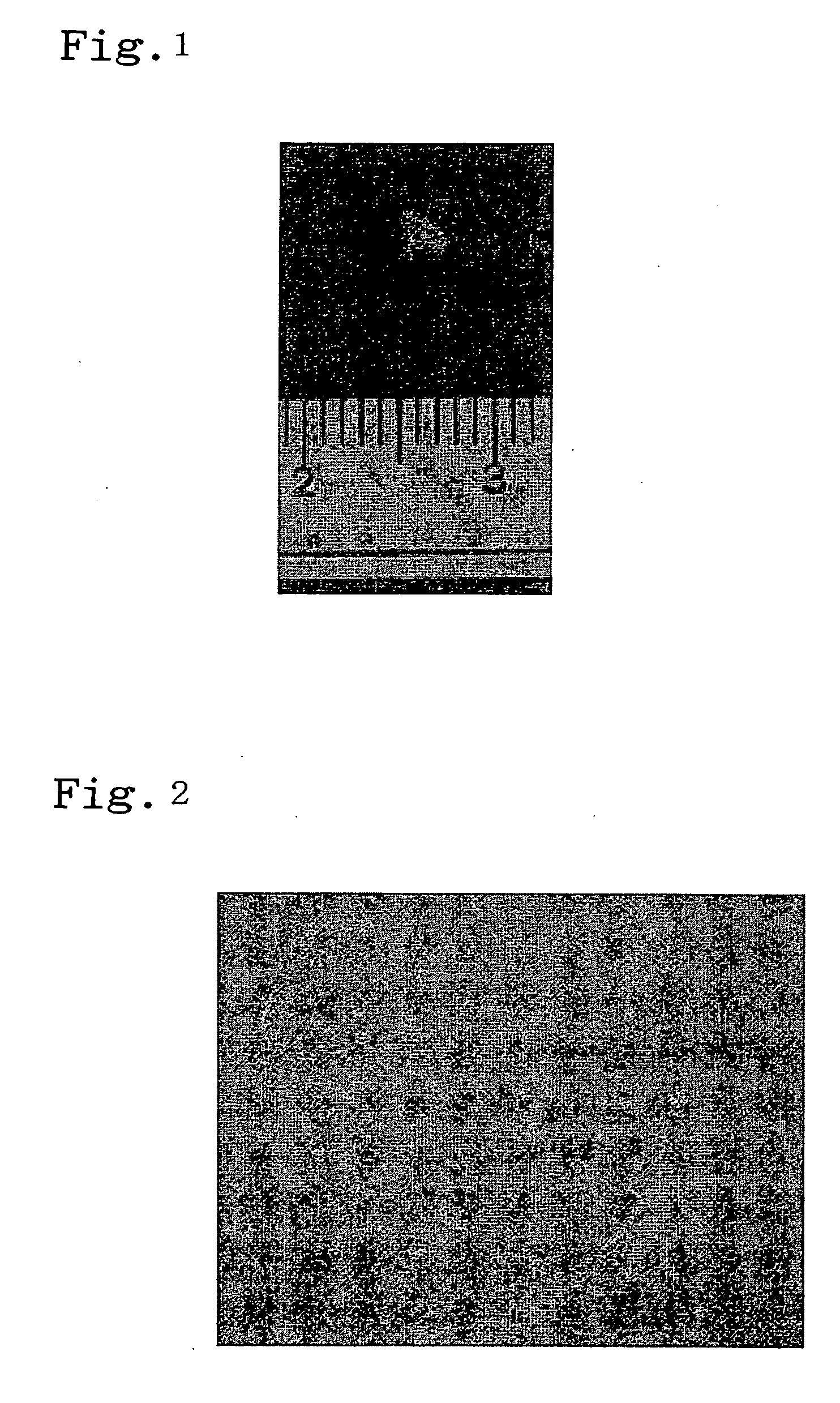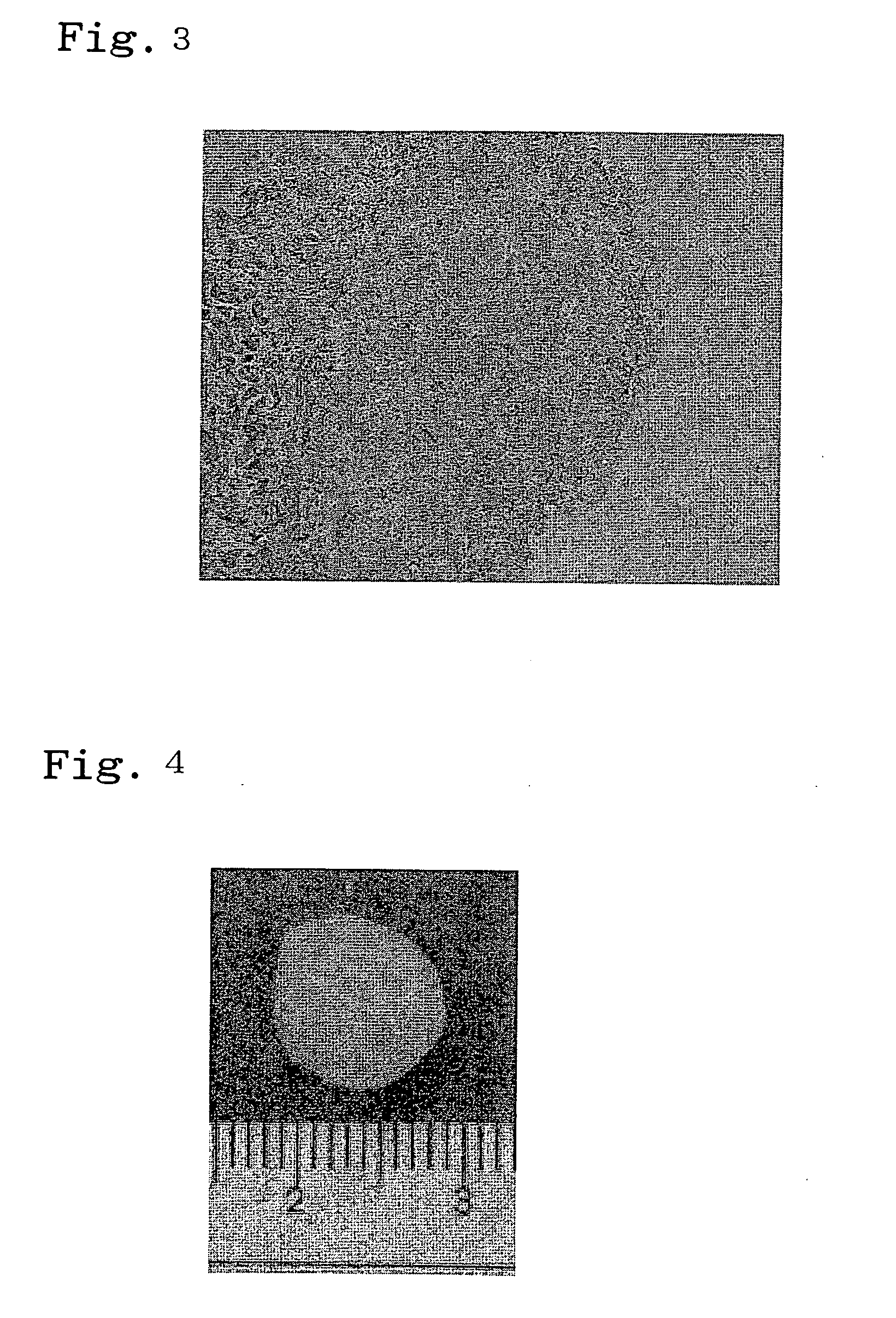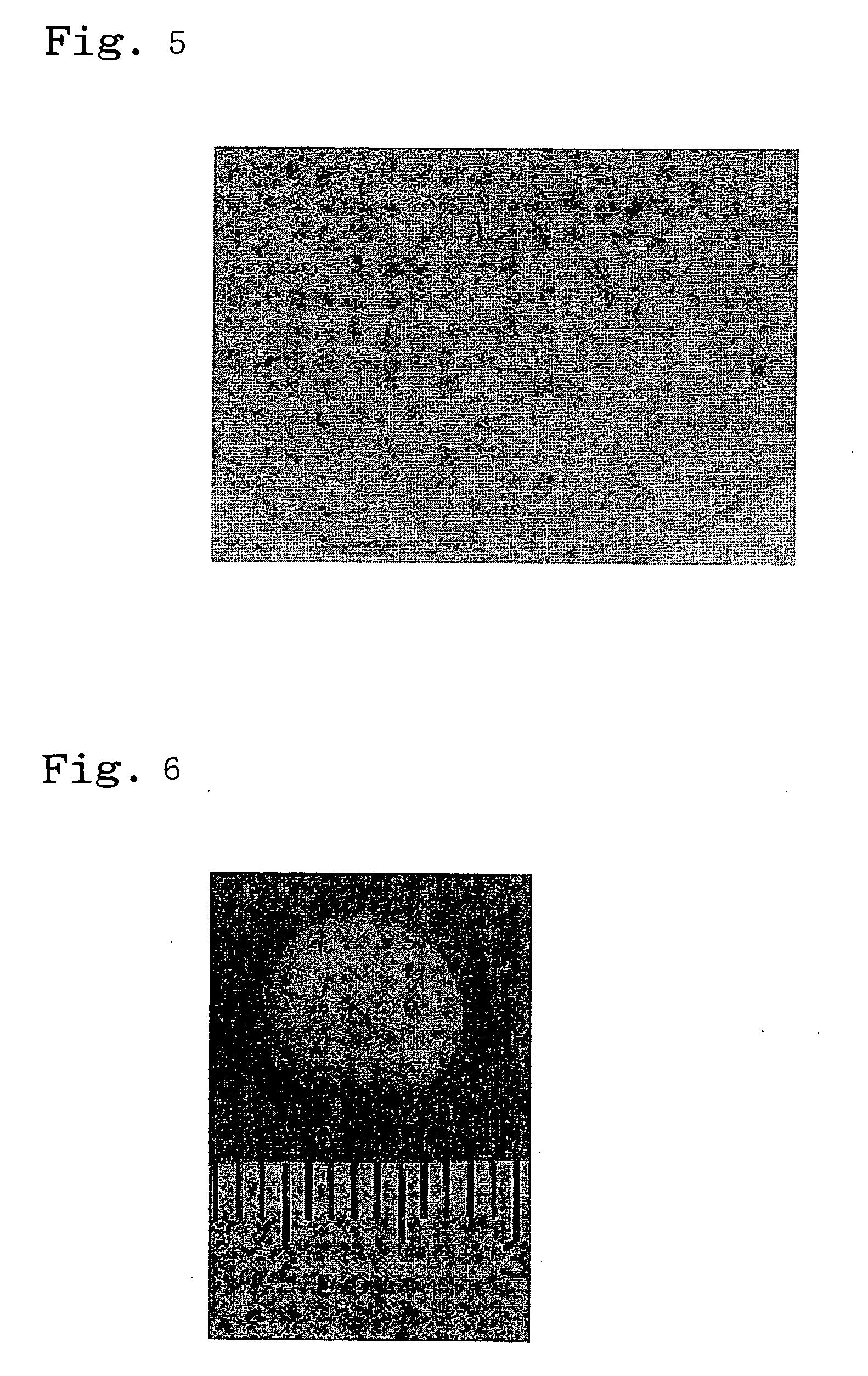Method of bone regeneration
a bone regeneration and bone technology, applied in the field of bone regeneration, can solve the problems of not being able to allow epithelial cells to coexist with the aforementioned cells, and achieve the effect of promoting the differentiation of mesenchymal cells
- Summary
- Abstract
- Description
- Claims
- Application Information
AI Technical Summary
Benefits of technology
Problems solved by technology
Method used
Image
Examples
example 1
Transplantation of Mixture of Tooth Germ Epithelial Cells and Tooth Germ Mesenchymal Cells
[0059] A lower jawbone was collected from a fresh swine with an age of 6 months old. The collected bone was conserved in a refrigerator at 4° C. until it was used in an experiment. During transportation, the bone was conserved on ice. An impacted tooth was aseptically excised, and it was then conserved in a 10% antibiotics-containing PBS solution. A calcified portion was removed from the tooth germ, and using a knife, the residual tissues were then fragmented into fragments of a size of approximately 2 mm. The fragments were then washed with a PBS solution 5 times.
[0060] Using an enzyme solution prepared by dissolving 2 mg / ml collagenase in DMEM medium, the washed tissues were subjected to an enzyme treatment for 50 minutes. The obtained tissues were subjected to pipetting using a 25-ml pipette for 10 minutes. 25 ml of a supernatant was then centrifuged (1,500 rpm, 5 minutes), so as to recove...
example 2
Transplantation of Tooth Germ Epithelial Cells and Tooth Germ Mesenchymal Cells, which have been Inoculated Separately
[0065] A lower jawbone was collected from a fresh swine with an age of 6 months old. The collected bone was conserved in a refrigerator at 4° C. until it was used in an experiment. During transportation, the bone was conserved on ice. An impacted tooth was aseptically excised, and it was then conserved in a 10% antibiotics-containing PBS solution.
[0066] The thus excised impacted tooth was subjected to an enzyme treatment for 120 minutes using an enzyme solution prepared by dissolving 200 PU / ml dispase in DMEM medium. Thereafter, the impacted tooth was separated into epithelial cells-containing tissues and mesenchymal cells-containing tissues, using a knife. A calcified portion was removed from each type of the thus separated tissues, and using a knife, the residual tissues were then fragmented into fragments of a size of approximately 2 mm. The fragments were then ...
example 3
Transplantation of Tooth Germ Mesenchymal Cells Wrapped with Oral Mucous Membrane Epidermic Cell Sheet
[0075] A lower jawbone was collected from a fresh swine with an age of 6 months old. The collected bone was conserved in a refrigerator at 4° C. until it was used in an experiment. During transportation, the bone was conserved on ice. An impacted tooth was aseptically excised, and it was then conserved in a 10% antibiotics-containing PBS solution.
[0076] The thus excised impacted tooth was subjected to an enzyme treatment for 120 minutes using an enzyme solution prepared by dissolving 200 PU / ml dispase in DMEM medium. Thereafter, the impacted tooth was separated into epithelial cells-containing tissues and mesenchymal cells-containing tissues, using a knife. A calcified portion was removed from each type of the thus separated tissues, and using a knife, the residual tissues were then fragmented into fragments of a size of approximately 2 mm. The fragments were then washed with a PB...
PUM
| Property | Measurement | Unit |
|---|---|---|
| temperature | aaaaa | aaaaa |
| size | aaaaa | aaaaa |
| diameter | aaaaa | aaaaa |
Abstract
Description
Claims
Application Information
 Login to View More
Login to View More - R&D
- Intellectual Property
- Life Sciences
- Materials
- Tech Scout
- Unparalleled Data Quality
- Higher Quality Content
- 60% Fewer Hallucinations
Browse by: Latest US Patents, China's latest patents, Technical Efficacy Thesaurus, Application Domain, Technology Topic, Popular Technical Reports.
© 2025 PatSnap. All rights reserved.Legal|Privacy policy|Modern Slavery Act Transparency Statement|Sitemap|About US| Contact US: help@patsnap.com



